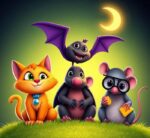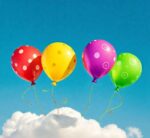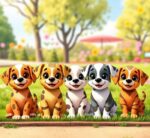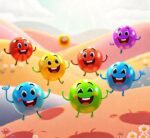- You are here:
- Home »
- words
- » Kindergarten Words That Start With W [LIST]
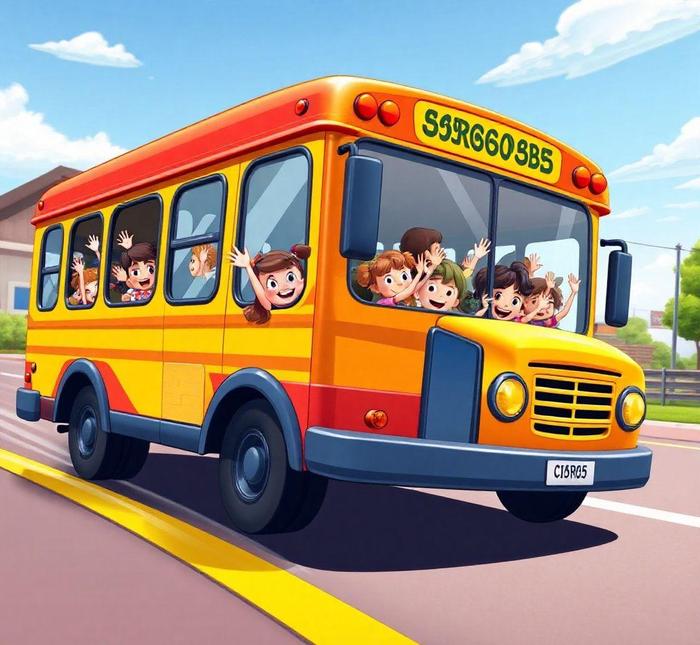
Kindergarten Words That Start With W [LIST]
When introducing young learners to the world of language, it’s important to start with words that are easy to understand and fun to say. For kindergarten students, words that start with the letter ‘W’ are a great addition to their growing vocabulary. These words not only help with letter recognition but also encourage early reading skills. Whether it’s a simple ‘water’ or a more exciting “whale”, these words can spark curiosity and make learning engaging for young children.
In this list, you’ll find a variety of kindergarten-friendly words that start with the letter “W”. Each word is selected for its relevance to everyday experiences and its potential to expand a child’s understanding of the world around them. From animals to objects, these words are ideal for classroom activities, vocabulary lessons, or even playful conversations at home. By exploring these ‘W’ words, children can enhance their phonemic awareness, develop spelling skills, and have fun along the way.
Kindergarten Words That Start With W
1. water
Water is a clear liquid that is essential for life. It can be found in rivers, lakes, and oceans, and is used for drinking, cleaning, and growing plants.
Examples
- The water in the pond is cold.
- I drink water every day to stay healthy.
- Can you fill the cup with water?
2. wind
Wind is the movement of air, usually caused by changes in the weather. It can be gentle or strong and is an important part of the Earth’s climate.
Examples
- The wind is blowing the leaves around.
- On a windy day, it’s fun to fly a kite.
- The wind feels cool on my face.
3. wiggle
Wiggle means to move back and forth in a quick, little way. It’s something people or animals do when they’re excited or restless.
Examples
- The puppy loves to wiggle its tail.
- Can you wiggle your fingers like this?
- He couldn’t sit still and kept wiggling in his chair.
4. wonder
Wonder is a feeling of curiosity or amazement. It’s when you think about something and want to know more about it.
Examples
- I wonder what we will do today in class.
- She looked at the stars with wonder in her eyes.
- Do you wonder how airplanes fly?
5. whale
A whale is a large sea mammal known for its size. Whales live in oceans and are famous for their songs and gentle nature.
Examples
- A whale is the largest animal in the ocean.
- Whales breathe through a hole on top of their heads.
- I saw a picture of a whale swimming in the sea.
6. wedding
A wedding is a special ceremony where two people get married. It’s often celebrated with family, friends, and a big party.
Examples
- They had a big wedding with lots of guests.
- My aunt is getting married next month.
- The bride wore a beautiful white dress at the wedding.
7. walk
To walk means to move on your feet at a slow pace. It’s a common way people get from one place to another.
Examples
- We go for a walk in the park every morning.
- She loves to walk her dog around the block.
- Let’s take a walk to the store.
8. warm
Warm describes something that has a comfortable temperature, not too hot or too cold. It can refer to the weather or things like food and clothes.
Examples
- The blanket feels warm and cozy.
- It’s a warm day, so we can go outside to play.
- She gave me a warm hug when I was feeling sad.
9. wolf
A wolf is a wild animal related to dogs. Wolves are known for living in groups called packs and for howling to communicate with each other.
Examples
- The wolf howls at the moon in the forest.
- Wolves live in packs and hunt together.
- I saw a picture of a wolf in a book about animals.
10. window
A window is a clear opening in a wall or building that lets light and air inside. It is usually made of glass.
Examples
- I like to look outside through the window.
- She opened the window to let in some fresh air.
- The window is very clean, you can see the birds outside.
11. wrist
The wrist is the part of your body where your hand connects to your arm. It helps you move your hands and wrists easily.
Examples
- He wore a watch on his wrist.
- My wrist hurts from writing too much.
- She twisted her wrist while playing soccer.
12. wallet
A wallet is a small, foldable case used to hold money, cards, and other important items. People often keep it in their pockets or bags.
Examples
- He keeps his money and cards in his wallet.
- My wallet is too full of receipts.
- She took out a dollar from her wallet to buy the ice cream.
13. wheel
A wheel is a round object that turns to help things move. It is used on cars, bikes, and many other machines to make movement easier.
Examples
- The wheel on the bike helps it roll smoothly.
- The car has four wheels to help it drive.
- He spun the wheel to see where it would land.
14. whistle
A whistle is a small device that makes a loud sound when blown. People also use their mouths to whistle by blowing air through their lips.
Examples
- The teacher blew the whistle to get the students’ attention.
- He can whistle very loudly with his fingers.
- We hear the whistle of the referee during the game.
15. watermelon
Watermelon is a large, sweet fruit with a green rind and red, juicy flesh. It is very popular in the summer for its refreshing taste.
Examples
- Watermelon is a juicy and sweet fruit to eat in summer.
- We ate watermelon at the picnic.
- The watermelon was cold and refreshing on the hot day.
16. watch
A watch is a small timepiece worn on the wrist. It helps you know the time, and people also use the word ‘watch’ when looking at something, like a movie.
Examples
- I like to watch cartoons in the morning.
- She wore a shiny gold watch on her wrist.
- We can watch the birds from the window.
17. warmth
Warmth is the feeling of being warm, or the quality of something being at a pleasant temperature. It can also refer to a feeling of kindness or comfort.
Examples
- I felt the warmth of the sun on my face.
- The warmth from the fireplace made the room cozy.
- She smiled at me with warmth in her eyes.
18. wall
A wall is a vertical structure that divides or surrounds a space. Walls are commonly made of brick, wood, or other materials and are part of buildings and homes.
Examples
- The wall in my room is painted blue.
- We put a picture on the wall.
- She leaned against the wall while waiting.
19. wool
Wool is a soft, thick material made from the hair of sheep. It is used to make warm clothes like sweaters and blankets.
Examples
- The sweater is made of soft wool.
- She wears a wool hat in the winter to keep warm.
- The sheep’s wool is used to make blankets.
20. weird
Weird means something that is strange or unusual. It can be used to describe things or behaviors that are not quite like what we expect.
Examples
- That’s a weird-looking bug!
- She has a weird habit of tapping her foot.
- It felt weird to be in a new school.
21. world
The world refers to the entire planet Earth, along with all its people, animals, and places. It is where we live and experience everything.
Examples
- The world is full of interesting places to visit.
- I want to travel around the world one day.
- We live on Earth, which is part of the world.
22. wrench
A wrench is a tool used to turn bolts and nuts. It helps to tighten or loosen things during repairs.
Examples
- He used a wrench to tighten the bolts on the bike.
- The mechanic fixed the car with a wrench.
- A wrench helps turn bolts and nuts when you’re fixing things.
23. wristband
A wristband is a band or strap worn around the wrist. It can be made of various materials and is often worn as a fashion item or for a cause.
Examples
- I wear a colorful wristband to show support for my team.
- The wristband is made of rubber and stretches to fit.
- He gave me a wristband as a souvenir.
24. whip
A whip is a long, flexible tool used to strike or control animals, often seen in cowboy or circus acts.
Examples
- The cowboy cracked his whip to control the horse.
- She used a whip to mix the cream and sugar.
- I heard the sound of a whip in the distance.
25. wish
A wish is something you hope for or dream about. People often make wishes when they blow out birthday candles or see a star in the sky.
Examples
- I made a wish when I blew out the candles.
- Do you wish for something special on your birthday?
- He wished for a new toy at Christmas.
26. wheelbarrow
A wheelbarrow is a small, hand-held cart with one wheel. It is used for carrying things like dirt, rocks, or tools.
Examples
- He pushed the wheelbarrow full of dirt to the garden.
- The wheelbarrow made it easier to carry heavy loads.
- I helped my dad with the wheelbarrow during the yard work.
27. wobble
Wobble means to move unsteadily or shake back and forth. It can happen when something is not balanced.
Examples
- The toy wobbles when you push it.
- The table wobbles because one leg is shorter.
- I saw a jellyfish wobble in the water.
28. wreath
A wreath is a circular arrangement of flowers, leaves, or other materials. It is often used as decoration for holidays or special occasions.
Examples
- We hung a wreath on the door for Christmas.
- The wreath was made of colorful flowers and leaves.
- She wore a beautiful flower wreath in her hair.
29. wood
Wood is the material that comes from trees. It is used to make furniture, buildings, and tools.
Examples
- The table is made of wood.
- We need some wood to build a fire.
- She carved a toy from a piece of wood.
30. wander
To wander means to walk around without a clear direction, often to explore or enjoy the surroundings.
Examples
- We like to wander around the park and explore.
- He wandered off and got lost in the store.
- The cat wandered into the yard to play.
31. wave
Wave means to move your hand back and forth to greet someone or say goodbye. It can also refer to the movement of water or flags in the wind.
Examples
- She waved goodbye when she left for school.
- We can wave to the boat as it passes by.
- The flag waves in the wind.
32. wonderful
Wonderful means something that is very good, special, or amazing. It is used to describe things that make you feel happy or impressed.
Examples
- The sunset was a wonderful sight.
- We had a wonderful time at the beach.
- You did a wonderful job on your drawing.
Historical Context

The development of language in early childhood education reflects a fascinating journey through both linguistic evolution and pedagogical progress. Words beginning with the letter “W” have always held a prominent place in this process, as educators strive to balance simplicity with richness in vocabulary. The inclusion of "W" words in kindergarten curricula is not arbitrary; it traces its origins back to the evolution of early literacy in Western educational systems.
Historically, the English language itself has undergone significant transformations, especially since the Norman Conquest of 1066. Many words beginning with "W" derive from Old English, Germanic roots, or even Scandinavian influences. For example, the word "water" has roots in Old English wæter, which in turn came from Proto-Germanic watar. As early English-speaking societies interacted with other linguistic groups, the sounds and spellings of certain words began to standardize. By the 19th century, as formalized education began to take root in the Western world, the teaching of literacy for young children took on a more structured form, which included the systematic introduction of words by alphabetical order.
In the kindergarten classroom, the aim was to introduce children to letters, sounds, and words in an engaging and accessible way. Words that start with “W” have become foundational components of this early learning process due to their prevalence in daily life—terms like “water,” “wheel,” “wonder,” and “walk” are both tangible and relatable, making them ideal for introducing children to phonemic awareness and vocabulary development. Over time, the teaching of "W" words has come to symbolize both a rich linguistic tradition and a modern approach to literacy in the formative years of a child’s education.
Word Origins And Etymology
The exploration of "W" words is not just an academic exercise but a journey through the very roots of language itself. The letter “W” holds a unique position in the English alphabet—it’s one of the relatively few letters whose sound is purely native to Germanic languages, and its history reveals much about the linguistic development of English.
The earliest “W” words in English can be traced back to Old English, a language that evolved from the Germanic tongue spoken by Anglo-Saxons, Angles, and Saxons. Words like “water” and “wood” are direct descendants of Old English terms like wæter and wudu, both of which themselves have origins in Proto-Indo-European roots. The word wæter, meaning "water," is thought to be derived from Proto-Indo-European wódr̥, a term that also gave rise to words for water in other Indo-European languages (e.g., Latin aqua and Greek húdor).
Words such as "wind," "walk," and "wish" follow similar etymological paths. "Wind" comes from Old English wind, which shares roots with Proto-Germanic windaz and ultimately traces back to the Proto-Indo-European root h₂wéh₁n̥s (meaning "wind" or "air"). Similarly, the word “walk” comes from Old English wealcan, meaning "to roll" or "to move in a wave-like manner," which is an apt description of human motion.
Interestingly, “W” words also include more recent additions to the language, many of which reflect the expansion of English vocabulary through scientific, technological, and cultural innovations. For example, “web,” in the context of the internet, is a much more modern term, originating in the late 20th century, derived from the Middle English word webbe, meaning a spider’s web.
In the context of kindergarten education, these etymologies are less important than the role these words play in helping children connect with their world. The familiarity and sound patterns of “W” words—such as "wolf," "wish," "work," and "world"—make them both easy to pronounce and emotionally resonant for young learners, giving them both historical depth and immediate practical relevance.
Common Misconceptions
When it comes to teaching young children words that begin with “W,” there are several misconceptions that can trip up both teachers and learners. One common issue arises from the sound of the letter "W" itself. In many other languages, the “W” sound does not exist or is pronounced differently, which can cause confusion for non-native English speakers or children learning English as a second language. For instance, in many Spanish-speaking countries, the "W" sound is often substituted with a "V" sound, so children may pronounce words like "water" as "vater."
Another misconception involves the relationship between phonetics and spelling. English is known for its irregular spelling rules, and "W" words are no exception. Words like “was,” “what,” “which,” and “when” often cause difficulty due to their inconsistent pronunciation. For example, the "wh" sound in words like "what" or "which" is not always intuitively linked to the spelling for young learners, who might expect a straightforward correspondence between letter and sound. This discrepancy can lead to confusion in early literacy development.
Additionally, in terms of early childhood education, there may be a tendency to focus on easier, more frequently used “W” words like "water" or "wonder" while neglecting the broader range of vocabulary that "W" offers. While these common words are undoubtedly useful, focusing solely on them can limit a child’s exposure to more complex vocabulary that will help expand their language skills in the long term. For instance, words like "wilderness," "whistle," or "warranty" may seem too advanced for young children, but introducing them early on—through playful stories, songs, or visual aids—can enrich a child’s language development.
Finally, teachers and parents sometimes mistakenly assume that introducing "W" words is simply about teaching vocabulary in isolation. In reality, language development is most effective when words are embedded in meaningful context. “W” words such as “worry,” “wonder,” and “warm” are often used in emotional or sensory contexts, and helping children connect them with their own experiences enhances both understanding and retention.
Conclusion
Kindergarten words that start with "W" are more than just building blocks of language—they are gateways to exploring the rich history, etymology, and nuances of the English language. These words are part of a long linguistic tradition, tracing back to Old English and beyond, and they form a vital part of early childhood education due to their simplicity, sound patterns, and relevance to everyday life. Whether through the familiar "water" or the more complex "wilderness," words starting with "W" offer ample opportunities to teach children about the world around them, while also helping them navigate the complex relationship between spelling, pronunciation, and meaning.
While misconceptions regarding pronunciation, spelling, and word complexity can present challenges, these hurdles can be overcome with thoughtful, context-rich instruction. As we continue to teach young learners, understanding the historical and linguistic roots of words like "wind," "wish," and "walk" can make a world of difference. Ultimately, the goal of introducing kindergarten students to these words is not just to enhance their vocabulary but to deepen their connection to language, history, and the ever-expanding world of communication.



